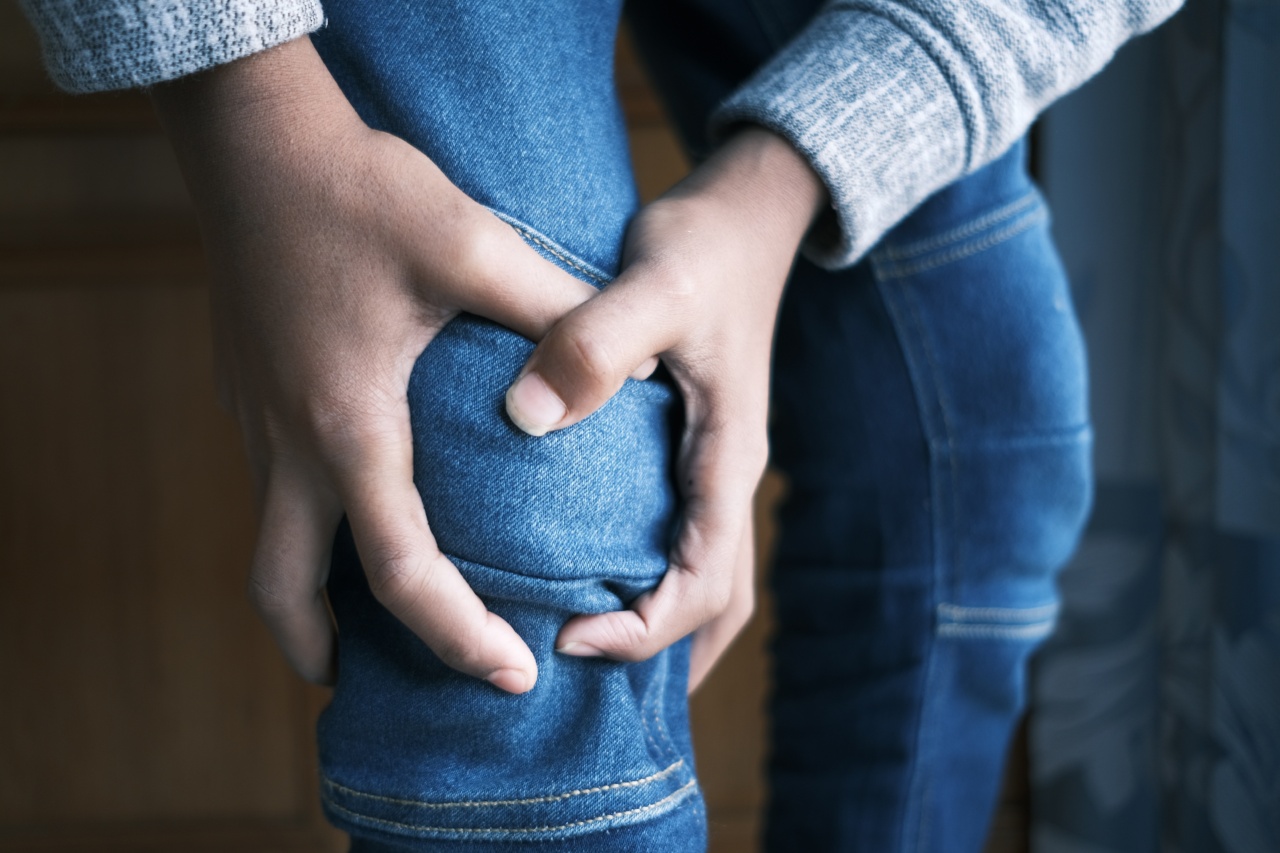Managing knee pain can be a challenging task that requires a combination of proper care, lifestyle changes, and effective pain management techniques.
Whether you are dealing with acute injuries, chronic conditions, or age-related wear and tear, it is important to understand the causes and symptoms of knee pain in order to effectively manage and find relief from it.
Causes of Knee Pain
Knee pain can be caused by a variety of factors, including:.
- Injuries such as sprains, strains, or ligament tears
- Overuse or repetitive stress on the knee joint
- Arthritis, including osteoarthritis and rheumatoid arthritis
- Meniscus tears or other structural damage to the knee
- Obesity, which puts excess strain on the knee joints
- Joint infections or inflammations
Symptoms of Knee Pain
The symptoms of knee pain may vary depending on the underlying cause, but commonly include:.
- Pain or tenderness in and around the knee joint
- Swelling or inflammation of the knee
- Stiffness or reduced range of motion
- Difficulty bearing weight or walking
- Popping or clicking sounds
Medical Evaluation and Diagnosis
If you are experiencing persistent knee pain, it is essential to seek medical evaluation for an accurate diagnosis.
A healthcare professional will conduct a physical examination, review your medical history, and may order diagnostic tests such as X-rays, MRIs, or blood tests to identify the specific cause and extent of your knee pain.
Tips for Managing Knee Pain
Managing knee pain involves a combination of self-care strategies, lifestyle modifications, and medical interventions. Here are some effective tips and tricks to help you find relief and improve the overall health of your knees:.
1. Rest and Protect
When you experience knee pain, it is important to give your knees adequate rest and avoid activities that aggravate the pain. Protect your knees by using assistive devices like crutches, braces, or knee sleeves.
These supports help reduce stress on the joints and promote healing.
2. Apply Ice or Heat
Ice and heat therapy are effective in managing knee pain. Apply ice packs wrapped in a cloth to the affected area for 15-20 minutes several times a day to reduce inflammation and swelling.
Alternatively, warm compresses or heating pads can help alleviate stiffness and promote blood circulation.
3. Practice Gentle Exercises
Engaging in gentle exercises can strengthen the muscles around your knee, promote flexibility, and reduce pain. Low-impact activities like swimming, cycling, and walking are often recommended.
Consult with a physical therapist for a customized exercise program that suits your specific condition and needs.
4. Maintain a Healthy Weight
Excess weight puts additional strain on your knees and can worsen knee pain. Maintaining a healthy weight through a balanced diet and regular exercise can significantly reduce the stress on your joints and improve your overall knee health.
5. Use Assistive Devices
If you experience persistent knee pain, using assistive devices such as knee braces or orthotic inserts can provide support and stability to the knee joint. These devices help distribute the weight evenly and reduce the load on the painful areas.
6. Consider Physical Therapy
Physical therapy plays a vital role in managing knee pain. A physical therapist can guide you through specific exercises, stretches, and techniques to improve joint mobility, reduce pain, and enhance strength and stability.
They may also use other modalities such as ultrasound or electrical stimulation for pain relief.
7. Explore Medications and Injections
In some cases, over-the-counter pain medications like nonsteroidal anti-inflammatory drugs (NSAIDs) can provide temporary relief from knee pain.
If the pain is severe or persistent, your doctor may prescribe stronger medications or recommend Corticosteroid injections to reduce inflammation and alleviate pain.
8. Try Alternative Therapies
Alternative therapies like acupuncture, massage, and chiropractic care have shown promise in managing knee pain. These therapies can help reduce pain, improve circulation, and promote relaxation.
However, consult with your healthcare provider before trying any alternative treatments.
9. Use Proper Footwear
Wearing proper footwear with good arch support and cushioning can significantly reduce knee pain. Shoes with shock-absorbing soles help minimize impact on the knees during walking or running activities.
Consider using shoe inserts or custom orthotics for additional support.
10. Surgical Interventions
If conservative approaches do not provide sufficient relief, surgical interventions may be considered. Common surgical treatments for knee pain include arthroscopy, knee replacement, or repair of damaged ligaments or meniscus tears.
Discuss with an orthopedic surgeon to explore the surgical options suitable for your condition.
Conclusion
Knee pain can significantly impact daily life and limit mobility, but it doesn’t have to control your life.
By understanding the causes, symptoms, and effective strategies for managing knee pain, you can find relief and improve the overall health of your knees. Remember to consult with healthcare professionals and specialists for an accurate diagnosis and customized treatment plan tailored to your individual needs.























